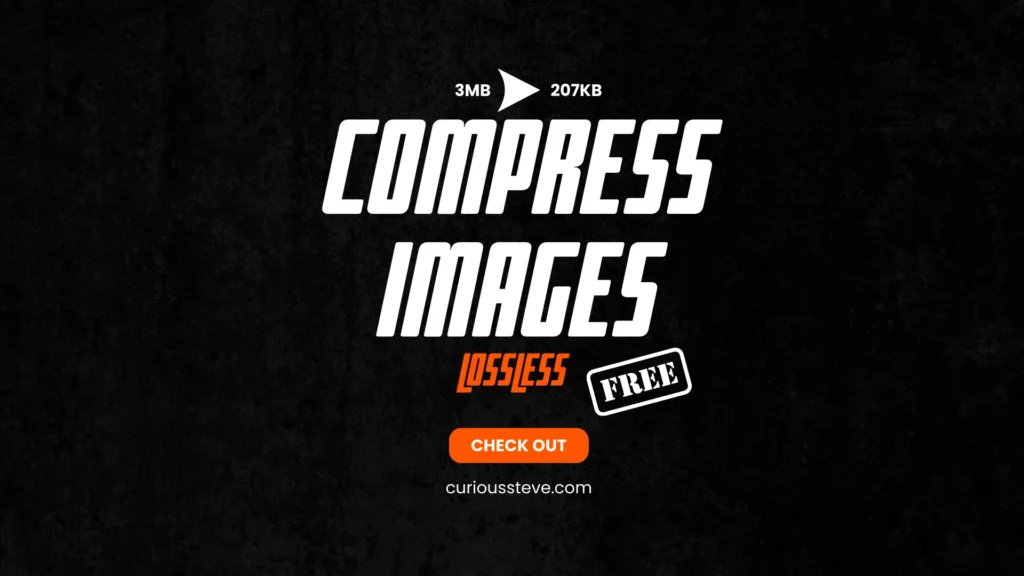In recent years, there has been a significant trend of rising image size,. It is due to technological developments, higher resolution displays, and a demand for richer visual content. As camera sensors improve and smartphones record more detailed images, the resulting files grow in size to accommodate the vast amount of visual data. This increase in image size is most noticeable in the field of photography, where high-megapixel cameras and the adoption of RAW file formats lead to larger files.
For instance, a single RAW image captured on modern professional cameras can easily exceed 50 megabytes, showcasing the significant leap in image size compared to older formats. This surge in file sizes presents both challenges and opportunities, from the need for more storage space to enhanced visual fidelity in the evolving landscape of digital media.
Individuals, particularly those who work regularly with visual content, are constantly seeking solutions that can successfully compress enormous image files while maintaining quality. This search for effective picture compression solutions arises from a practical requirement to manage storage space, streamline data transfer, and improve website speed. Professionals in graphic design, web development, and photography are constantly looking for new ways to reduce file sizes while maintaining the quality. Various software and online platforms offer advanced compression algorithms, allowing users to significantly shrink image sizes while preserving essential elements. Tools like Photoshop are also doing this, but it takes a lot of time to master it.
Squoosh.app: Compress Images Without Losing Quality
qoosh.app emerges as a game-changer for individuals seeking to compress images without compromising their quality. Picture this – a tool that allows you to seamlessly reduce the size of your images while preserving every intricate detail, pixel by pixel. Squoosh.app, with its intuitive interface and powerful compression algorithms, is the go-to solution for professionals and enthusiasts alike who demand excellence without the burden of bloated file sizes.
What distinguishes Squoosh.app is its user-friendly design combined with cutting-edge compression algorithms running in backgraound. Whether you’re a photographer trying to optimize your portfolio for online sharing or a web developer looking to improve site performance, this application meets a wide range of demands. The true magic is in the simplicity of the process:
- Upload your image
- You can change compression parameters,
- That’s it watch the transformation as Squoosh.app performs its compression wizardry.
What was the result? A visually appealing image with a substantially smaller file size, making it a useful tool for everyone including me. Take a look at how squoosh end up saving me a staggering 94% of the image size. The original image was around 3.21 MB in size and the optimized image was just 207KB.
Furthermore, Squoosh.app embraces versatility by supporting a plethora of image formats, ensuring compatibility with various platforms and devices. Not only that, Squoosh also offers a wide range of options to tailor fit your optimization requirements. Apart from compression, It can do tasks like
- Resize your image.
- Reduce the color palette.
- Supports various format including AVIF, Moz JPEG, WEBP, QOI etc.
- Smoothing.
- Channelization.
- Separate chroma quality.
Squoosh.app: How it works?
After seeing all of this, you might wonder how it works. How does it compress without losing quality? The answer is that Squoosg supports a wide array of Quantization tables. What is a quantization table? Quantization tables are crucial components in the process of encoding and compressing images. It determine how the visual information in an image is represented and ultimately affecting the file size and quality of the compressed image. They are several procedure involved in this and Squoosh supports these.
JPEG Annex K: It refers to a specific quantization table defined in the JPEG standard, Annex K.
Flat: It is a uniform quantization table with equal weight assigned to all frequency components.
MSSIM-tuned Kodak: MSSIM stands for Mean Structural SIMilarity. This quantization table is likely tuned for optimizing structural similarity, a metric used to measure the similarity between two images.
ImageMagick: ImageMagick is a widely used open-source software suite for displaying, converting, and editing raster image files. The quantization table associated with ImageMagick might be optimized for its specific image processing algorithms.
PSNR-HVS-M-tuned Kodak: PSNR-HVS-M stands for Peak Signal-to-Noise Ratio with Human Visual System Model. Similar to MSSIM-tuned Kodak, this quantization table may be optimized for preserving visual quality based on human perception.
Klein et al, Watson et al, Ahumada et al, Peterson et al: These are techniques named after researchers or developers who have proposed or contributed to specific quantization tables. Each may have its own optimizations and considerations.
For more interesting news and reveals related to tech, follow us on our Facebook, Telegram channel. We haunt interesting news every day on the Internet.
